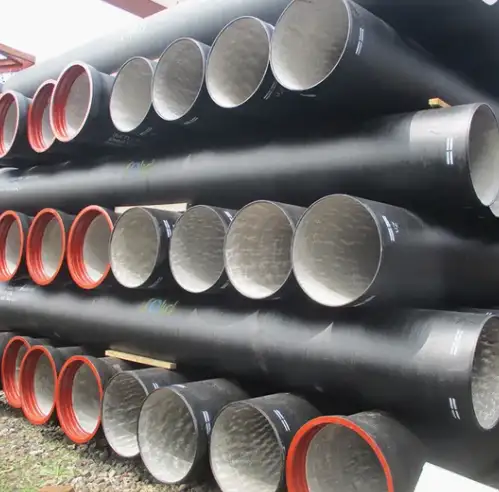Ductile iron pipes are essential components in water distribution and sewage systems worldwide. Understanding the weight of these pipes is crucial for various reasons, including transportation logistics, installation procedures, and structural calculations. This article delves into the specifics of ductile iron pipe weights, focusing on the 4-inch diameter size, and provides comprehensive information to assist engineers, contractors, and procurement professionals.

Understanding Ductile Iron Pipes
Ductile iron pipes are made from a type of cast iron that has been treated to improve its ductility, making it more flexible and resistant to breakage. This enhancement allows the pipes to withstand higher pressures and external forces compared to traditional cast iron pipes. The manufacturing process involves adding nodular graphite to the iron, which alters its microstructure and imparts the desired properties.
Factors Influencing Pipe Weight
Several factors determine the weight of a ductile iron pipe:
-
Diameter: Larger diameters result in heavier pipes due to increased material volume.
-
Wall Thickness: Thicker walls provide higher pressure resistance but add to the weight.
-
Length: Longer pipes naturally weigh more.
-
Coatings and Linings: Protective coatings and linings, such as cement or epoxy, add weight but are essential for corrosion resistance.
Weight Specifications for 4-Inch Ductile Iron Pipes
The weight of a 4-inch ductile iron pipe varies based on its wall thickness class. For instance, a Class 51 pipe weighs approximately 10.9 lbs/ft, while a Class 53 pipe weighs around 13.8 lbs/ft . These weights are crucial for transportation and installation planning.
Comparison with Other Pipe Materials
| Pipe Material | Weight (lbs/ft) | Durability | Cost |
|---|---|---|---|
| Ductile Iron | 10.9 – 13.8 | High | Moderate |
| PVC | 2.5 – 3.5 | Moderate | Low |
| Steel | 15 – 25 | High | High |
| Concrete | 20 – 30 | Very High | Very High |
Ductile iron pipes offer a balance between weight, durability, and cost, making them a preferred choice for many applications.
Applications of Ductile Iron Pipes
Ductile iron pipes are widely used in:
-
Water Distribution Systems: Transporting potable water to residential and commercial areas.
-
Sewer Systems: Carrying wastewater from homes and industries.
-
Fire Protection Lines: Serving as conduits for fire suppression systems.
Installation Considerations
When installing ductile iron pipes, it’s essential to consider:
-
Handling Equipment: Ensure cranes or hoists can support the pipe’s weight.
-
Trenching: Excavation must accommodate the pipe’s size and weight.
-
Jointing Methods: Techniques like push-on or mechanical joints should be selected based on the pipe’s specifications.
Maintenance and Longevity
Ductile iron pipes have a lifespan of over 100 years when properly maintained. Regular inspections and protective coatings can prevent corrosion and extend service life.
Environmental Impact
Ductile iron is 100% recyclable, making it an environmentally friendly choice. Its durability reduces the need for frequent replacements, conserving resources.
Conclusion
Understanding the weight and specifications of ductile iron pipes is vital for effective planning and execution of infrastructure projects. The 4-inch ductile iron pipe, with its optimal balance of weight and strength, serves as a reliable component in various applications.
Frequently Asked Questions
1. What is the weight of a 4-inch ductile iron pipe?
The weight varies based on the wall thickness class. For example, a Class 51 pipe weighs approximately 10.9 lbs/ft, while a Class 53 pipe weighs around 13.8 lbs/ft .
2. How does the wall thickness affect the pipe’s weight?
Increasing the wall thickness enhances the pipe’s pressure resistance but also increases its weight. For instance, a thicker-walled pipe will weigh more per foot than a standard one.
3. Are there lighter alternatives to ductile iron pipes?
Yes, materials like PVC are lighter but may not offer the same durability and pressure resistance as ductile iron.
4. How is the weight of a ductile iron pipe calculated?
The weight is determined by the pipe’s dimensions, wall thickness, and material density. Manufacturers often provide weight charts based on these factors.
5. Can the weight of the pipe affect transportation costs?
Absolutely. Heavier pipes require more robust transportation methods and may incur higher shipping costs.
6. What is the lifespan of a ductile iron pipe?
With proper maintenance, ductile iron pipes can last over 100 years, making them a cost-effective choice in the long term.

